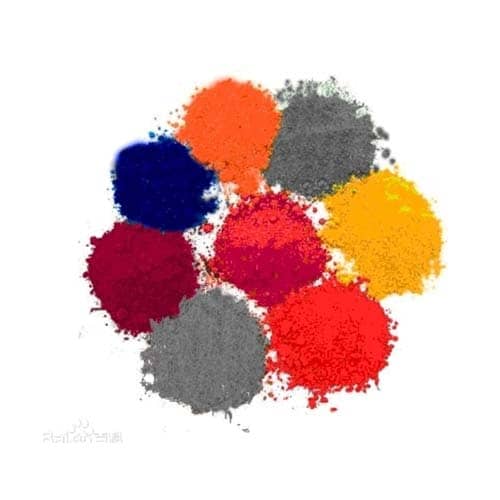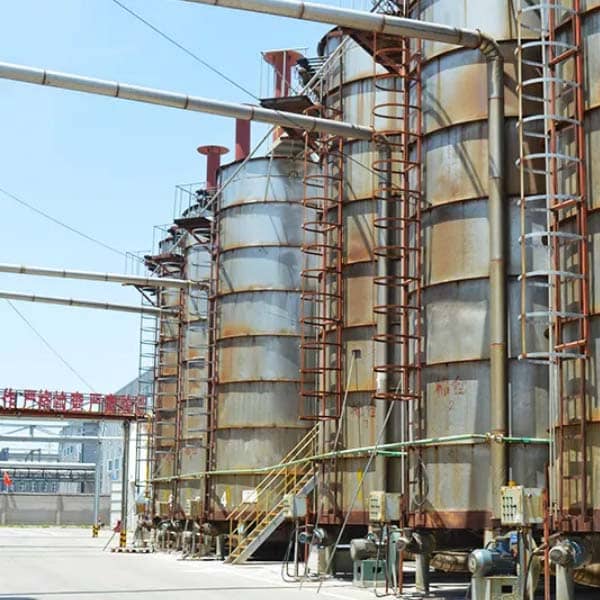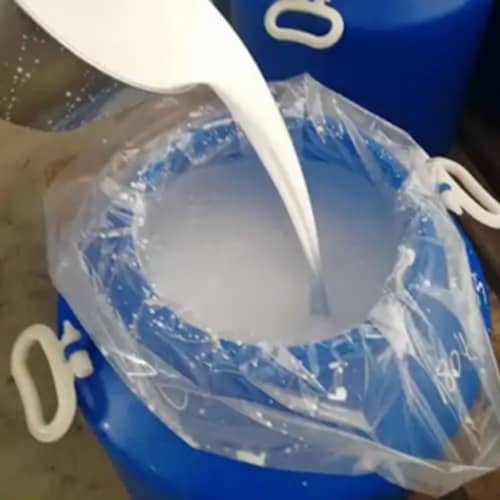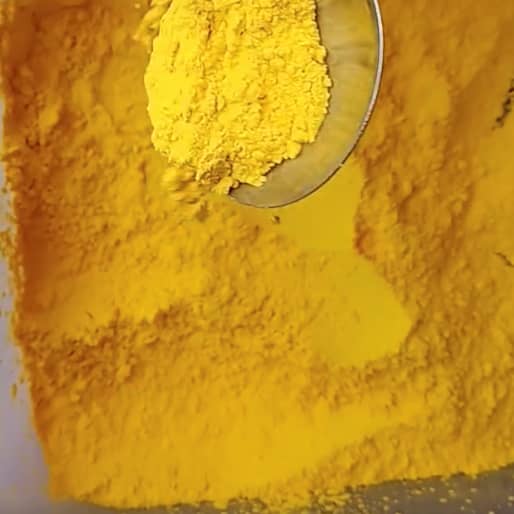Pigment Factory: let’s learn about the pigment.
Pigment manufacturer:Industrial pigments Application in Coating Paint
As we all know, the main application directions of organic pigments are plastics, coatings, and inks. Paints are divided into water-based paints and oil-based paints. Among them, what we usually call oil-based paint is what we often call paint. Paints are subdivided into many types according to their functions and uses, so we won’t go into details one by one here. Today we mainly talk about what issues should be paid attention to when using organic pigments in paint.
1.Pigment particle size. When organic pigments are used in paint, the paint factory will perform preliminary grinding based on its own process and performance requirements for the pigments. Through this process, the particle size of the pigments will be ground into finer particles to meet their usage requirements. This determines that the particle size data of pigments is very important when used in paints. Factories prefer small particle sizes to large particle sizes.
2.Pigment dispersion. Because the paint is an oily system, most of the paint is resin and solvent. Because the pigment is insoluble in the solvent, it can only be dispersed and suspended in the solvent. If the pigment has good dispersion properties, the pigment particles will be dispersed evenly in the solvent. , the produced paint will be smooth, smooth and delicate. On the contrary, if the dispersion performance is poor, the pigments will easily agglomerate in the paint, which will make the produced paint have a grainy feel, resulting in poor quality paint products.
3.The amount of oil absorbed by the pigment. When pigments are used in oil-based systems, the data that requires special attention is the oil absorption capacity. Pigments with high oil absorption will cause the solvent to be very viscous, which will lead to poor leveling of the paint. The paint will be as viscous as frozen. The paint produced in this way will not meet people’s production needs and use. Pigments with small oil absorption are more likely to be favored by paint factories than pigments with large oil absorption.
Pigment supplier: What is organic pigments?
Organic pigments are insoluble organic substances that are usually added to a substrate in a highly dispersed state to color the substrate. The fundamental difference from dyes is that dyes are soluble in the dyeing medium used, while pigments are neither soluble in the medium in which they are used nor the substrate being colored. Many pigments and dyes have the same chemical structure. They can be converted into each other by using different methods of use.
For example, some vat dyes and sulfur vat dyes can be used as fiber dyes if they are reduced to leuco bodies. ; If not reduced, it can be used as a pigment in high-end inks. Organic pigments are widely used in the pulp coloring of inks, paints, coatings, and synthetic fibers, as well as in the pigment printing of fabrics, the coloring of plastics, rubber, and leather, among which the largest amount of pigments is used in inks. The production of organic pigments accounts for about a quarter of the total dye production.
1.physical properties
Organic pigments have bright colors and strong tinting power; they are non-toxic, but some varieties are often less light-resistant, heat-resistant, solvent-resistant and migration-resistant than inorganic pigments.
The variety of colors is endless and colorful, but there is a certain internal relationship between various colors. Each color can be determined by three parameters, namely hue, brightness and saturation. Hue is the characteristic that distinguishes colors from each other. It is determined by the chromatographic composition of the light source and the perception of each wavelength emitted by the surface of the object to the human eye. It can distinguish red, yellow, green, blue, purple and other characteristics. Value, also known as brightness.
It is a characteristic value that represents the change in lightness and darkness on the surface of an object; by comparing the brightness of various colors, colors can be divided into light and dark. Saturation, also known as chroma, is a characteristic value that represents the color intensity of an object’s surface, making the difference between bright and dark colors. Hue, lightness, and saturation form a three-dimensional body. Using these three to create a scale, we can measure color numerically. There are ever-changing colors in nature, but the most basic ones are red, yellow, and blue, which are called primary colors.
2.Common organic pigments
Azo pigments
Water-insoluble organic compounds containing azo groups (-N=N-) in their molecular structures have the largest variety and largest output among organic pigments. Azo pigments are diazo components prepared by diazotization of aromatic amines or heteroaromatic amines and then combined with acetylene amine, 2-naphthol, pyrazolone, 2-hydroxy-3-naphthoic acid or 2-hydroxy Coupling components such as -3-naphthoyl aromatic amine are coupled to form water-insoluble precipitates, which are general azo pigments. Its synthesis method is basically the same as that of azo dyes, but the latter is water-soluble.
Commonly used general azo pigments are orange, yellow, and red pigments such as: Permanent Orange RN (C.I. Pigment Orange 5), Golden Red (C.I. Pigment Red 21), and Benzidine Yellow G (C.I. Pigment Yellow 12). In order to improve pigment properties such as light fastness, heat resistance, and organic solvent resistance, two molecules can be condensed into macromolecules through aromatic diamines. The pigments made in this way are called macromolecule pigments or condensed azo pigments, such as: Macromolecule Orange 4R (C.I. Pigment Orange 31), Macromolecule Red R (C.I. Pigment Red 166)
color lake
Water-soluble dyes (such as acid dyes, direct dyes, basic dyes, etc.) are water-insoluble pigments produced by reacting with precipitants. Its color is brighter, its color spectrum is more complete, its production cost is low, and its light fastness is higher than that of original water-soluble dyes. Precipitants are mainly inorganic salts, acids, carriers, etc. Inorganic salt precipitation uses barium chloride, calcium chloride, manganese sulfate, etc. as precipitants to react with water-soluble dyes to generate water-insoluble salts of barium, calcium, manganese, etc.
such as: Permanent Red F5R (C.I. Pigment Red 48: 2), Golden Red C (C.I. Pigment Red 53:1). Acid precipitation uses phosphoric acid-molybdic acid, phosphoric acid-tungstic acid, tannic acid, etc. as precipitating agents to react with water-soluble alkaline dyes to form insoluble lakes such as: light-fast rose lake (C.I. Pigment Violet 1), radioactive green lotus (C.I. Pigment Violet 3). Carrier precipitation is to deposit water-soluble dyes on the surface of carriers such as aluminum hydroxide and barium sulfate to form water-insoluble lakes such as: acidic golden lake (C.I. Pigment Orange 17), light-fast lake blue lake (C.I. Pigment Blue 17) .
Phthalocyanine pigment
The main body in the molecule is phthalocyanine,They are water-insoluble organic substances, mainly blue and green pigments. Most products contain divalent metals, such as copper, nickel, iron, manganese, etc., and some have replaced the benzene ring in the molecule with a pyrrole ring or other rings. , other groups are also introduced into the molecule, and different structures have different properties and uses. The main variety of phthalocyanine pigments is copper-containing phthalocyanine blue (C.I. Pigment Blue 15). The main industrial production method is to react phthalic anhydride and urea (or phthalonitrile directly) with cuprous chloride in the presence of an ammonium molybdate catalyst.
The resulting crude product is commonly known as “copper phthalocyanine”. Different products can be obtained by different methods of pigment post-processing. For example, if the crude product is dissolved in concentrated sulfuric acid, and then slowly precipitates in water, the α crystal form can be obtained, which is a blue organic pigment with red light; if the crude product is dissolved in concentrated sulfuric acid, and then a small amount of Chlorine gas makes the molecule carry 1 to 2 chlorine atoms, and the color of the resulting product is greener than that without chlorine.
If the crude product is ground with dry sodium chloride in a ball mill, a stable green-light beta crystal product can be obtained . The crude product is heated to about 220°C in the melt of aluminum trichloride and sodium chloride, and chlorine gas is introduced to introduce 14 to 16 chlorine atoms into the molecule. The resulting product will be a bright green pigment; if a small amount of bromine is introduced , the color of the obtained product will be more yellow and brighter.
Quinacridone Pigments
Production began in 1958 by the pigment manufacturer. The production method is to obtain the γ crystalline quinacridone pigment through self-condensation of diethyl succinate, condensation with aniline, ring closing, refining and oxidation. Because its heat resistance, light fastness, brightness and other properties are comparable to those of phthalocyanine pigments, the product is called phthalocyanine red (C.I. Pigment Violet 19). In fact, the molecular structure of the two is completely different. If different conditions are used during oxidation, a β-crystalline quinacridone pigment with a bluer color will be obtained, which is commercially known as phthalocyanine violet.
In addition to the varieties mentioned above, there are also some varieties with excellent performance, such as dioxazine pigments, the representative variety is Permanent Violet RL (C.I. Pigment Violet 23); isoindolinone pigments, the representative variety is Pigment Yellow 2GLT (C.I. Pigment Yellow 109); benzimidazolone pigments, the representative variety is Permanent Orange HSL (C.I. Pigment Orange 36).
The research focus of organic pigment workers is on the improvement of pigment post-processing, such as selecting better crystal forms, manufacturing finer particles with small particle size distribution, improving the wettability of pigments, etc., so that organic pigments can play a greater role. utility.
Pigment factory: What are inorganic pigments?
Inorganic pigments are pigments whose main components are inorganic substances. Almost all inorganic pigments are chemical compounds, often complex mixtures, in which metals are part of the molecule. With the recovery of the global economy, domestic and foreign construction and building materials, coatings, plastics, inks and other industries have experienced rapid growth, and the demand for inorganic pigments has also increased rapidly. With the rapid development of the coating industry, inorganic pigments, one of its main raw materials, have made great progress, of which titanium dioxide and iron oxide account for the largest proportion.
1.physical properties
Inorganic pigments are oxides of non-ferrous metals, or some metal-insoluble metal salts. Inorganic pigments are divided into natural inorganic pigments and artificial inorganic pigments. Natural inorganic pigments are mineral pigments.
Pigments made from natural minerals or inorganic compounds. Natural mineral pigments generally have lower purity and darker color, but are cheap. Synthetic inorganic pigments have a complete spectrum of colors, bright and pure colors, and strong hiding power.
Inorganic pigments are light-fast, heat-resistant, weather-resistant, solvent-resistant, and have strong hiding power, but their chromatograms are not very complete, their tinting power is low, their color brightness is poor, and some metal salts and oxides are highly toxic.
2.Classification
Sort by color
According to national standards, inorganic coloring pigments can be divided into 12 categories: red, orange, yellow, green, blue, purple, brown, black, white, metallic, luminescent pigments and body pigments. They only show differences in the amount of reflected light. That is the difference in brightness. Color pigments can selectively absorb light of certain wavelengths and reflect light of other wavelengths to present various colors.
As a polymer compound with multiple uses, HEMC is widely used in construction, chemical, food, pharmaceutical and other industries. With the development of science and technology and the increase in demand, the application fields of HEMC will continue to expand and deepen, bringing more convenience and contribution to people’s production and life.
Black pigment
An important pigment second only to white pigment. The main variety is carbon black. The properties of carbon black for pigments are different from those used for rubber processing. The main quality indicators of pigment carbon black are blackness and hue. Carbon black is an inorganic pigment colorant for plastics second only to titanium dioxide. Carbon black is classified according to processing methods and comes in many varieties. When used as a pigment, it is generally called “pigment carbon black”. Carbon black not only has coloring properties, but also has excellent weather resistance and thermal oxidation resistance.
Red pigment
The red pigment among inorganic pigments is mainly iron oxide red. Iron oxide comes in a variety of colors, from yellow to red, brown to black. Iron oxide red is the most common iron oxide pigment. It has good hiding power, tinting power, chemical resistance, color retention, dispersion, and is relatively cheap. Iron oxide red is used in the production of floor paint and ship paint.
Due to its significant anti-rust properties, it is also the main raw material for making anti-rust paint and primers. When the particles of iron oxide red are ground to ≤0.01μm, the hiding power of the pigment in organic media decreases significantly. This pigment is called transparent iron oxide and is used to make transparent paint or metallic glitter paint. It is more efficient than using organic dyes. Better color retention.
Yellow pigment
There are mainly varieties such as lead chromium yellow (lead chromate), zinc chromium yellow (zinc chromate), cadmium yellow (cadmium sulfide) and iron yellow (hydrated iron oxide). Among them, lead chrome yellow is the most widely used and has the largest output. The world’s annual output is about 180kt, and China’s annual output is about 10kt. Lead chrome yellow has strong hiding power, bright color, and is easy to disperse, but it easily darkens under sunlight. The hiding power and tinting power of zinc chrome yellow are worse than that of lead chrome yellow.
but it is lighter in color and has good light resistance. Cadmium yellow has good heat resistance, light resistance, and bright color, but its tinting power and hiding power are not as good as lead chromium yellow, and its cost is high, so its application is limited. Lead, chromium yellow and cadmium yellow both contain heavy metals and cannot be used for coloring children’s toys, cultural and educational supplies and food packaging. Iron yellow color is darker, but its durability, dispersion, hiding power, heat resistance, chemical resistance, and alkali resistance are very good, and it is cheap, so it is widely used for coloring building materials.
Lead chrome yellow
By combining lead nitrate or lead acetate with sodium dichromate (or potassium dichromate), sodium hydroxide, aluminum sulfate and other raw materials, various colors of lead chromium yellow can be produced according to different ratios and different reaction conditions.
zinc chrome yellow
Also known as zinc yellow. Suspend zinc oxide in water, and then add potassium dichromate and chromic acid to obtain basic potassium zinc chromate K2CrO4·3ZnCrO4·Zn(OH)2, which is zinc chromium yellow pigment. Sulfuric acid or hydrochloric acid can also be used to replace part of the chromic acid, but the generated potassium sulfate or potassium chloride must be thoroughly washed away before filtering and drying.
Basic potassium zinc chromate can be used as lemon yellow pigment, or it can be combined with iron oxide red to make primer. Another kind of zinc chromium yellow is produced by reacting zinc oxide with chromic acid. It is also called tetrabasic zinc chromate ZnCrO4·4Zn(OH)2 and is mostly used to make phosphating primers.
iron yellow
Natural iron oxide yellow is a kind of hydrated iron oxide containing various impurities, mainly silicates. In the past, the preparation of iron oxide yellow was based on waste iron sludge from the reduction of nitrobenzene to produce aniline. Another production method is to heat ferrous sulfate for hydration in the presence of iron and oxygen, which produces iron oxide yellow. Iron oxide yellow has poor thermal stability. When heated to above 180°C, it dehydrates and turns into iron oxide red.
green pigment
There are two main types: chromium oxide green and lead chromium green. Chromium oxide green has excellent light resistance, heat resistance, and chemical resistance, but its color is darker and its tinting power and hiding power are poor. The durability and heat resistance of lead chrome green are not as good as those of chromium oxide green, but it has bright color, good dispersion and is easy to process. Since it contains toxic heavy metals, its usage has been gradually reduced since the advent of organic pigments such as phthalocyanine green.
أكسيد الكروم الأخضر
Also known as chromium trioxide, it is produced by roasting chromium anhydride, sodium dichromate (or potassium, ammonium salt) and carbon or sulfur at high temperatures. Its color ranges from bright green to dark green. It is mostly used for coloring metallurgical products and cement. Its particle hardness is high and can be used as a polishing agent for optical materials and metal grinding; its spectral reflection characteristics are very close to chlorophyll, so it can be used in military camouflage paint.
lead chrome green
It is a mixture of chrome yellow and iron blue. It is made by adding iron blue wet slurry during the chrome yellow manufacturing process. By adjusting the amount of iron blue added, you can get from yellow light green (2% to 3% iron blue) to dark green ( 60% ~ 65% iron blue) green pigments of various colors. Lead chrome green can be used in general paints. There is also a mixture of chrome yellow and phthalocyanine blue (see organic pigments), also called lead chrome green. This pigment has bright color and good other properties.
blue pigment
There are mainly varieties such as iron blue, cobalt blue, and ultramarine. Among them, ultramarine blue has the largest yield. Ultramarine blue is resistant to alkali but not acid, has bright and bright color, and is resistant to high temperatures. Iron blue is acid-resistant and not alkali-resistant. Its hiding power and tinting power are higher than ultramarine blue, and its durability is worse than ultramarine blue.
Since phthalocyanine blue was put on the market, the amount of iron blue has been declining year by year because its tinting power is twice as high as that of iron blue and its other properties are good. Cobalt blue is resistant to high temperatures and has excellent light resistance, but its tinting power and hiding power are slightly poor, its price is high, and its uses are limited.
brown pigment
أكسيد الحديد البني
Molecular formula Fe2O3·nH2O, iron brown blended product has the characteristics of iron oxide red and iron oxide yellow. Iron brown also has the main characteristics of large color range and strong adaptability. Compared with iron oxide red and iron yellow, it has a wider application range. More applicable to users.
Pigment supplier: The difference between inorganic pigments and organic pigments
Inorganic pigments are oxides of non-ferrous metals, or some metal-insoluble metal salts. Inorganic pigments are divided into natural inorganic pigments and artificial inorganic pigments. Natural inorganic pigments are mineral pigments. Organic pigments are colored organic compounds, which are also divided into two categories: natural and synthetic. Nowadays, synthetic organic pigments are commonly used. There are many varieties of organic pigments, with a relatively complete range of colors and better performance than inorganic pigments.
Inorganic pigments are mainly carbon black and metal oxides or salts such as iron, titanium, barium, zinc, chromium, cadmium, and lead. Organic pigments can be divided into several categories such as monoazo, disazo, lake, phthalocyanine or condensed ring pigments.
Inorganic pigments are light-fast, heat-resistant, weather-resistant, solvent-resistant, and have strong hiding power. However, they do not have a complete chromatogram, low tinting power, poor color brightness, and some metal salts and oxides are highly toxic. Organic pigments have diverse structures, complete chromatograms, bright and pure colors, and strong tinting power. However, some products have poor light resistance, weather resistance, and solvent resistance. High-end organic pigments also have good light resistance, weather resistance, and solvent resistance, but they are expensive.
As an professional Pigment manufacturer, جينان هونغتشيوان صناعة التيتانيوم المحدودة is located in Jinan, a beautiful spring city. The company’s scientific research personnel sincerely cooperate with well-known domestic universities and various titanium dioxide production enterprises to study and produce active pigment with great concentration. Some of its products have been widely used in chemical, textile, paper, plastic, paint and other production fields.





